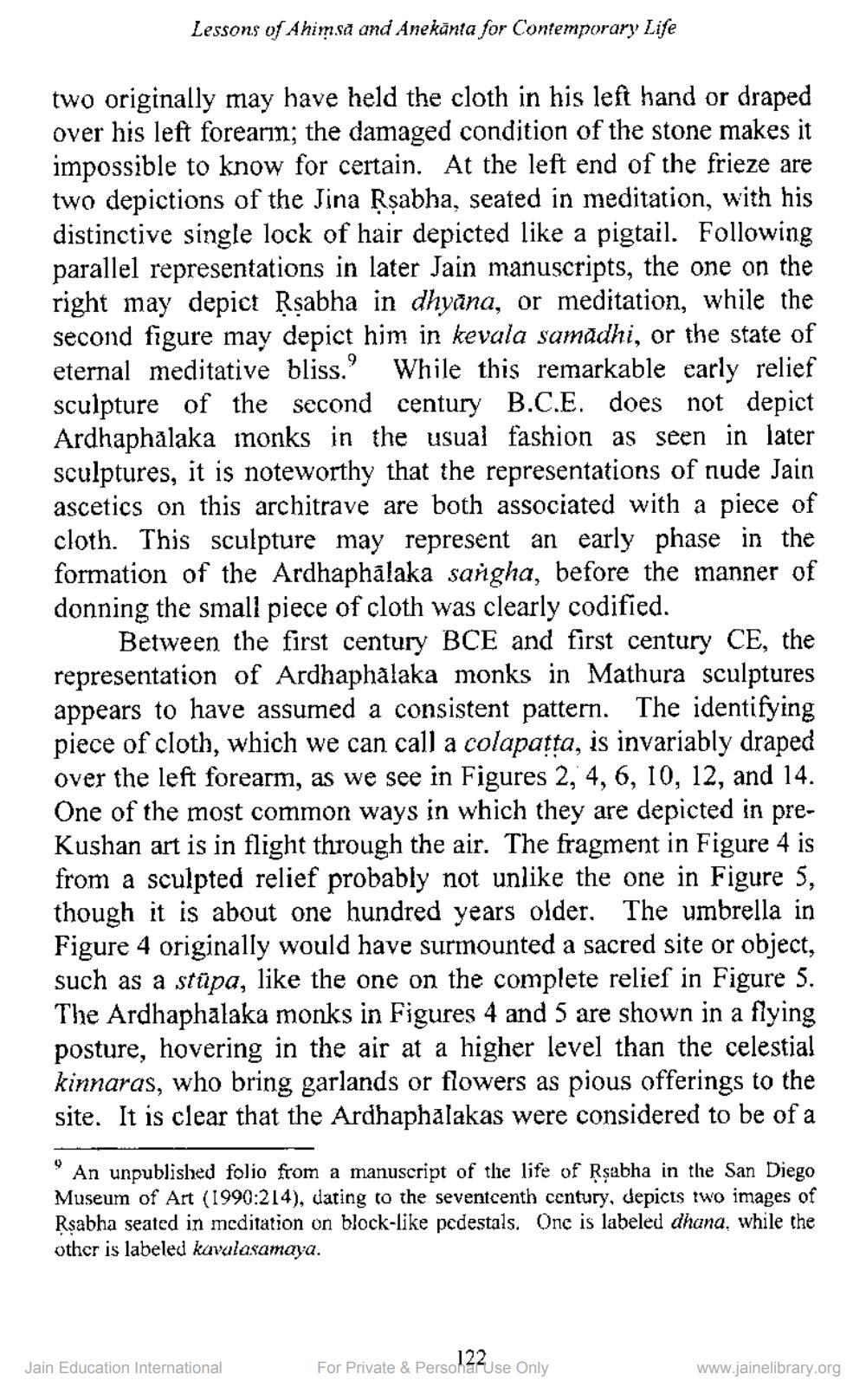________________
Lessons of Ahimsa and Anekānta for Contemporary Life
two originally may have held the cloth in his left hand or draped over his left forearın; the damaged condition of the stone makes it impossible to know for certain. At the left end of the frieze are two depictions of the Jina Rsabha, seated in meditation, with his distinctive single lock of hair depicted like a pigtail. Following parallel representations in later Jain manuscripts, the one on the right may depict Rsabha in dhyana, or meditation, while the second figure may depict him in kevala samadhi, or the state of eternal meditative bliss. While this remarkable early relief sculpture of the second century B.C.E. does not depict Ardhaphalaka monks in the usual fashion as seen in later sculptures, it is noteworthy that the representations of nude Jain ascetics on this architrave are both associated with a piece of cloth. This sculpture may represent an early phase in the formation of the Ardhaphālaka sargha, before the manner of donning the small piece of cloth was clearly codified.
Between the first century BCE and first century CE, the representation of Ardhaphalaka monks in Mathura sculptures appears to have assumed a consistent pattern. The identifying piece of cloth, which we can call a colapatta, is invariably draped over the left forearm, as we see in Figures 2, 4, 6, 10, 12, and 14. One of the most common ways in which they are depicted in preKushan art is in flight through the air. The fragment in Figure 4 is from a sculpted relief probably not unlike the one in Figure 5, though it is about one hundred years older. The umbrella in Figure 4 originally would have surmounted a sacred site or object, such as a stūpa, like the one on the complete relief in Figure 5. The Ardhaphalaka monks in Figures 4 and 5 are shown in a flying posture, hovering in the air at a higher level than the celestial kinnaras, who bring garlands or flowers as pious offerings to the site. It is clear that the Ardhaphalakas were considered to be of a
An unpublished folio from a manuscript of the life of Rşabha in the San Diego Museum of Art (1990:214), dating to the seventcenth century, depicts two images of Rsabha seated in mcditation on block-like pedestals. One is labeled dhana, while the other is labeled kavalasamaya.
Jain Education International
For Private & Personal use only
www.jainelibrary.org




